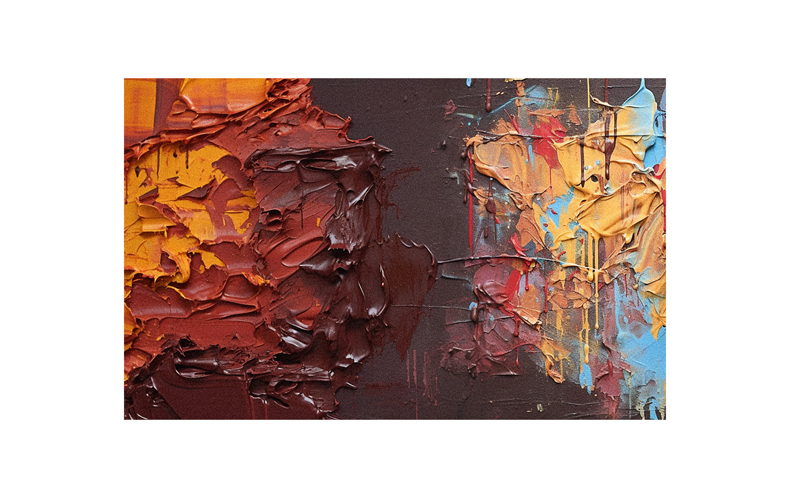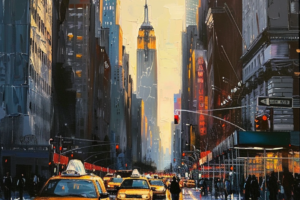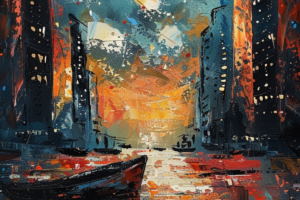Contemporary creators continue to challenge conventional wisdom by crafting captivating artworks using unconventional mediums. You might have marveled at Kate MacDowell’s ‘First and Last Breath’ or Andre’s reimagined Nikes, prized pieces that push past typical boundaries of artistic expression. These innovators incorporate everything from natural elements to repurposed plastics, introducing new textures and forms while addressing pressing issues like environmental sustainability and social justice.
Artists such as Ai Weiwei and Tara Donovan inspire others with their resourceful use of materials, thus reshaping the art world in exciting ways. This article will take you through the history and significance of unconventional mediums in contemporary art. We’ll dive into how these non-traditional materials create visually stunning artwork and engage audiences in thought-provoking discussions about critical societal issues.
Let’s explore how this evolving art form fosters a more profound interest in sustainable practices within the creative realm.
What is it?
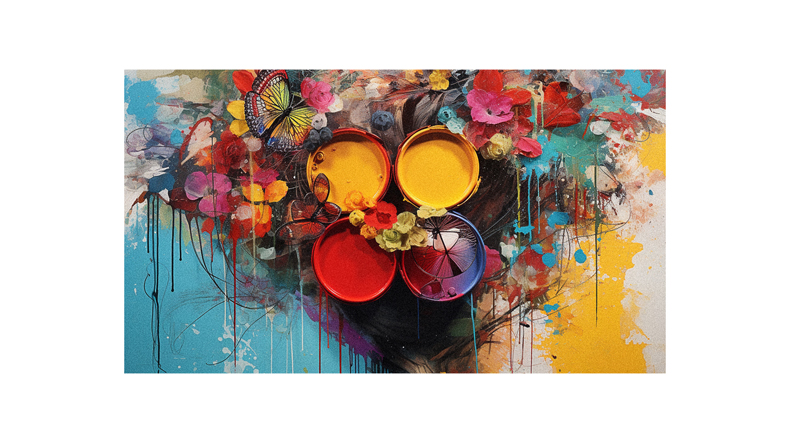
You’ve seen how artists like Andre and Tara Donovan push the boundaries of creativity, using unconventional materials like repurposed Nike shoes or everyday items to craft compelling contemporary art – it’s powerful.
This trend is known as exploring unconventional mediums in contemporary art. It’s an innovative approach that uses unexpected items to create visually captivating pieces beyond traditional paints and canvases. From glass containers and tree bark to edible substances, these unconventional materials bring new textures, forms, and concepts to life. They challenge norms while addressing environmental issues.
Ai Weiwei’s work with natural materials is a perfect example of this shift in artistic expression. Surprisingly profound and intellectually engaging, this art style sparks a dialogue between the artist and audience like never before.
Historical Use
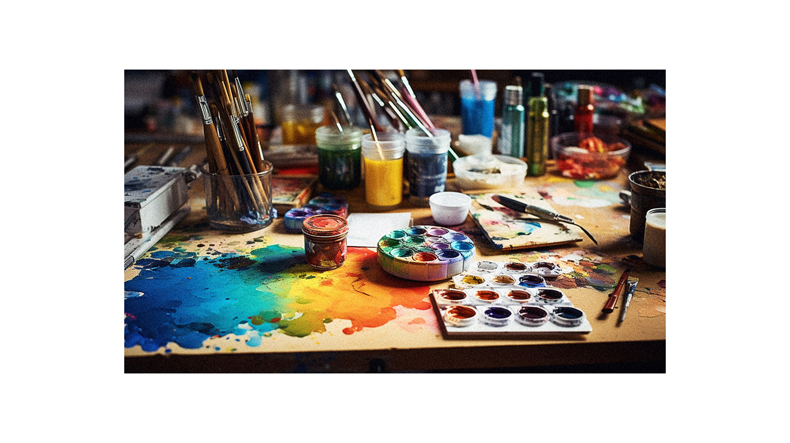
Historically, artists haven’t shied away from employing non-traditional materials in their pieces, sparking creativity and challenging the norms of their time.
Picasso’s use of newspaper clippings in his Cubist collages revolutionized modern art.
Duchamp’s ‘Readymades,’ everyday objects presented as art, questioned what was considered ‘art.’
Fast forward to today, and contemporary art still embraces unconventional mediums.
Artists like Ai Weiwei have used everything from porcelain sunflower seeds to bicycles, exploring themes of cultural identity and political dissent.
Or take Tara Donovan, who uses everyday items like plastic cups or straws to create large-scale installations that alter our perception of space and form.
Exploring unconventional materials has continually shaped the art world, inspiring fresh waves of creativity among upcoming artists.
Natural and Found Materials
Imagine stumbling upon a cluster of autumn leaves, their fiery hues gleaming in the sunlight, and seeing not just a fleeting symbol of seasonal change but a potential canvas for your artistic prowess.
This is the essence of contemporary art’s natural and found materials exploration. It’s about transforming everyday objects into profound statements.
From Ai Weiwei’s sunflower seeds installation to Tara Donovan’s assemblages made from everyday items like straws or buttons, artists challenge norms and spark conversations around environmental issues. They’re creating visually captivating works that connect with audiences on multiple levels.
You see, unconventional materials aren’t just about aesthetics—they’re platforms for dialogue and catalysts for change. Using them can inspire fresh creativity while addressing critical social topics.
Defining Unconventional Materials
So, what’s the deal with these offbeat materials in art? To put it simply, unconventional materials are anything outside of the traditional canvas and paint. They’re objects that aren’t typically associated with art-making.
Artists might use everything from recycled plastics to edible substances, turning everyday items into a statement about our world. For example, Chinese artist Ai Weiwei used sunflower seeds made from porcelain in one of his installations!
It’s all about pushing boundaries and challenging norms. Plus, when artists use such unusual materials, they make you stop and think and connect on a deeper level because these items are so familiar yet displayed in an entirely new context.
In essence, unconventional materials inject freshness and provoke thought in contemporary art.
Artists and Their Work
You might be surprised to find out how many artists are shaking up the scene with their unique use of materials that aren’t traditionally linked to art.
Take Tara Donovan, for instance. She crafts breathtaking installations from everyday items like drinking straws or plastic cups.
Then there’s Ai Weiwei, a Chinese contemporary artist who boldly uses sunflower seeds made of porcelain in his work, challenging us to question what constitutes ‘art’.
Closer home, Andre is creatively deconstructing and reconstructing Nike shoes using unconventional materials. His creations spark conversations about consumerism and waste.
These artists have embraced unconventional mediums and used them as powerful tools for social commentary and environmental consciousness.
It’s indeed a brave new world in the realm of contemporary art!
Challenges and Preservation
While it’s exciting to see artists pushing boundaries with their unusual choice of materials, they’re often met with unique challenges, especially when preserving these artworks for future generations.
Unconventional materials like repurposed plastics or substances that break down over time can be tricky to maintain in the long run. Some pieces may even change as they age, adding another layer of complexity and meaning.
So, how do you preserve something designed to disintegrate? There’s no easy answer. Artists and curators often collaborate closely on this issue, sometimes even incorporating decay into the artwork’s narrative.
Remember, though, while these challenges may seem daunting, they are part and parcel of working with unconventional mediums in art.
Visually Captivating Artwork
It’s no secret that artists using offbeat materials can create pieces that are a feast for the eyes. Imagine, for instance, an intricate sculpture crafted from repurposed plastic or a painting made with dyes derived from fruits and vegetables. These unconventional mediums add unexpected textures and forms, making the artwork more dynamic and exciting.
Such creativity doesn’t just catch your gaze—it also engages your mind. It prompts you to consider where these materials came from or how they were repurposed. Essentially, it tells a story beyond what you see on the surface.
So, next time you view contemporary art, take note of the materials used. You might be surprised by their origin—and equally captivated by their transformation into something new and visually stunning.
Connecting with the Audience
Artists who delve into non-traditional materials are not just creating art but inviting you into a conversation. Using unconventional mediums in contemporary art isn’t merely about aesthetics; it’s an explicit invitation to engage, question, and interpret.
They want you to wonder why they chose these specific materials and what meaning lies beneath their choice. Artists like Ai Weiwei or Tara Donovan aren’t just crafting visually stunning pieces—they’re using repurposed plastics or everyday items as tools for dialogue. You might question societal norms, reflect on environmental issues, or reassess your understanding of art.
So, next time you encounter a piece made from unconventional materials, remember you’re part of the conversation, too.
Sustainability and Environmental Consciousness
Picture this: you’re strolling through a gallery and come across a striking sculpture made entirely of recycled plastic bottles. It’s beautiful, sure, but it also speaks volumes about sustainability and environmental consciousness.
The artist used unconventional materials for their unique aesthetic appeal and to make a powerful statement. Contemporary art isn’t just about creating visually captivating pieces; it’s about challenging norms and sparking conversations on pressing issues like climate change.
Artists are turning trash into treasures, highlighting the importance of recycling and repurposing in our increasingly waste-ridden world. This innovative approach reshapes the art landscape, inspiring society to think differently about consumption and waste disposal.
So next time you toss that bottle into the bin, think twice–it could be your medium for your masterpiece!
Tackling Social and Political Issues
You’re not just looking at a canvas splattered with paint but a powerful commentary on social and political issues. Contemporary artists cleverly use unconventional materials to drive home their message.
It’s not about creating visually appealing art alone; it’s about making you pause, think, and question the norms. They might incorporate debris from war-torn areas or everyday items from refugee camps into their work; these aren’t just artistic choices—they symbolize struggle, loss, and displacement.
Some artists even turn to edible substances to critique world hunger issues. Their creations can be haunting reminders of society’s downfalls or powerful calls to action for change.
In this way, unconventional materials in contemporary art are more than aesthetic elements—they’re tools for social dialogue and political protest.
Follow us on Pinterest for more tips, tutorials, and artist reviews!

